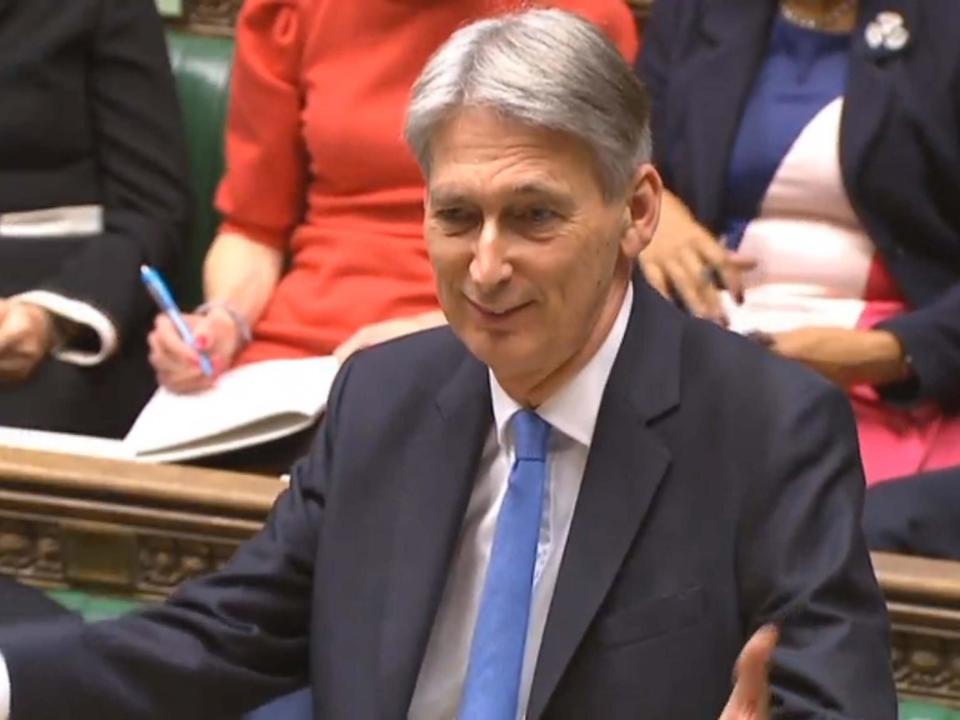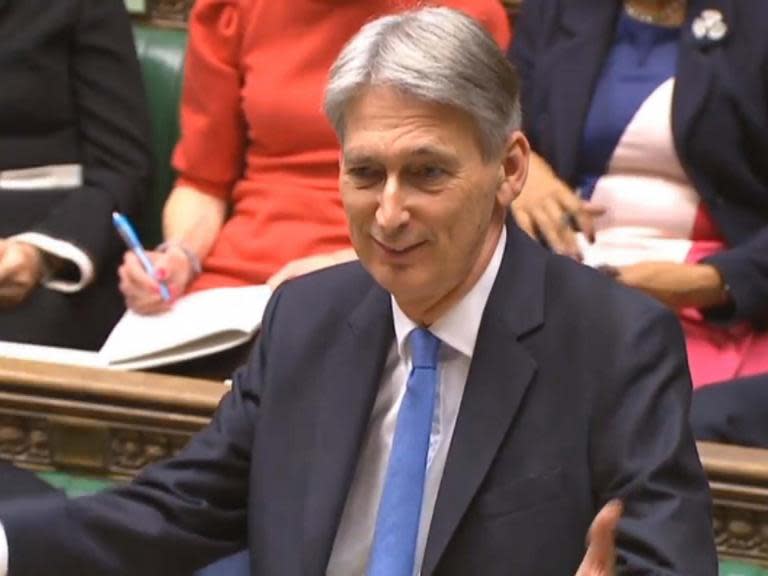Philip Hammond’s nightmare housing plan benefits rich kids and drives up the price of housing for the rest of us
This Autumn Budget, Chancellor Philip Hammond had to offer young people more than just extra maths homework in order to ward off electoral oblivion in 2022.
His chosen lure was not VAT-free brunch; it was the abolition of stamp duty for first-time buyers on purchases of up to £300,000 and on the first £300,000 of purchases up to £500,000.
But there’s a catch: this only applies to young people who are able to pull together the hefty deposit required to secure a mortgage. Take a typical home in London, where a house costs £422,000. If you wanted to buy this house, you would need a minimum 10 per cent cash deposit – that’s £42,200 plus the legal and survey fees, which come in at an average of just under £3,000. Here Hammond’s plan would save you an upfront cost of £11,000. But you still need that £45,200 in the first place.
Even if you use the Help to Buy equity loan scheme, you still need a 5 per cent deposit – and in London, the Help to Buy scheme applies to homes up to the value of an eye-watering £600,000.
This isn’t a policy to help poor millennials; it’s one that works in favour of those with cash in the bank (of Mum and Dad). Essentially, Hammond has given wealthy young people more money to buy flat-pack furniture in Ikea. Less of a strain on Mum and Dad – after the deposit, a trip to the Ikea in Croydon might have been one ask too far, after all.
There’s a cognitive dissonance in a Government that opposes universal free education and subsidised transport on the grounds that we don’t want to be funding rich people’s lives, but is OK to give rich kids cash for a new fitted kitchen. It’s a politically cynical move of picking the lowest hanging fruit, in an effort to bring back the errant middle class youths to their natural home: the Tory party. Yes, they may go to Glasto and chant “Oh Jeremy Corbyn” one weekend in the summer, but they have to live somewhere for the rest of the time.
To those of you who are reading this and crying, “Hang on, I work hard for my cash, and I scraped together myself to buy my own home!”, I’d like to remind you that the Government is doing you over too. The Office for Budget Responsibility expects this cut in stamp duty to actually increase house prices by 0.3 per cent, putting them even further out of reach for the majority of young people. That’s another £1,266 on the average London home – a month’s wage for most 20-somethings.
The same can be said for the extra money being put into Help to Buy – the equity loan scheme has actually driven up the price of new-build homes, according to Morgan Stanley. The money has mostly been gobbled up by house-building firms. There’s a good chance the same firms will use the cut in stamp duty to do the same.
The real issue here is that young people can’t afford to scrape together ever-increasing deposits. Living costs are increasing, and wages are being squeezed. Zero-hour contracts and precarious work are on the rise, and they mainly affect the under-30s. The number of young people becoming insolvent has jumped up to a third.
All the while, rents skyrocket. One in seven private sector tenants are dashing away more than half of their income on rent, according to the Local Government Association. Not surprisingly, considering that one in five Tory MPs are landlords, there wasn’t much help for renters in the Budget.
The real issue is the supply, not the demand, side of the housing market – which Tories have put on the boil with their new Budget. The solution is simply to build more homes, and not just more of the expensive sort – it means more affordable and social rent homes too.
Today Hammond committed to spending £44bn on housing, with the aim to build 300,000 homes in the next year (perhaps hoping we’ll forget about their track record in these sorts of announcements and whether they deliver: the flagship Government housing plan promised under David Cameron’s Starter Homes scheme failed to build a single one of the 200,000 homes planned).
This year’s Budget promises that councils will have their Housing Revenue Account caps lifted and be permitted to build more homes for first-time buyers and affordable renters. But the figures are vague – what percentage of this new building will be social homes, and actually affordable (rather than 80 per cent of the market rate), remains unclear. On the other side of the Commons, at least Labour committed to the figure of at least 100,000 council and genuinely affordable homes.
If he really wanted to make housing accessible for young people, rather than well-off prospective Tory voters, he should have significantly raised the cap of what councils are allowed to borrow, reinstate Government grants to help them build new homes, let them keep the tax receipts from the sale of council homes sold under Right to Buy, and halt the forced sale of local authorities’ most affordable homes.
But what did we expect – when does the Conservative Party do anything else but look after its own?
Read the other side of the debate here

 Yahoo News
Yahoo News 

